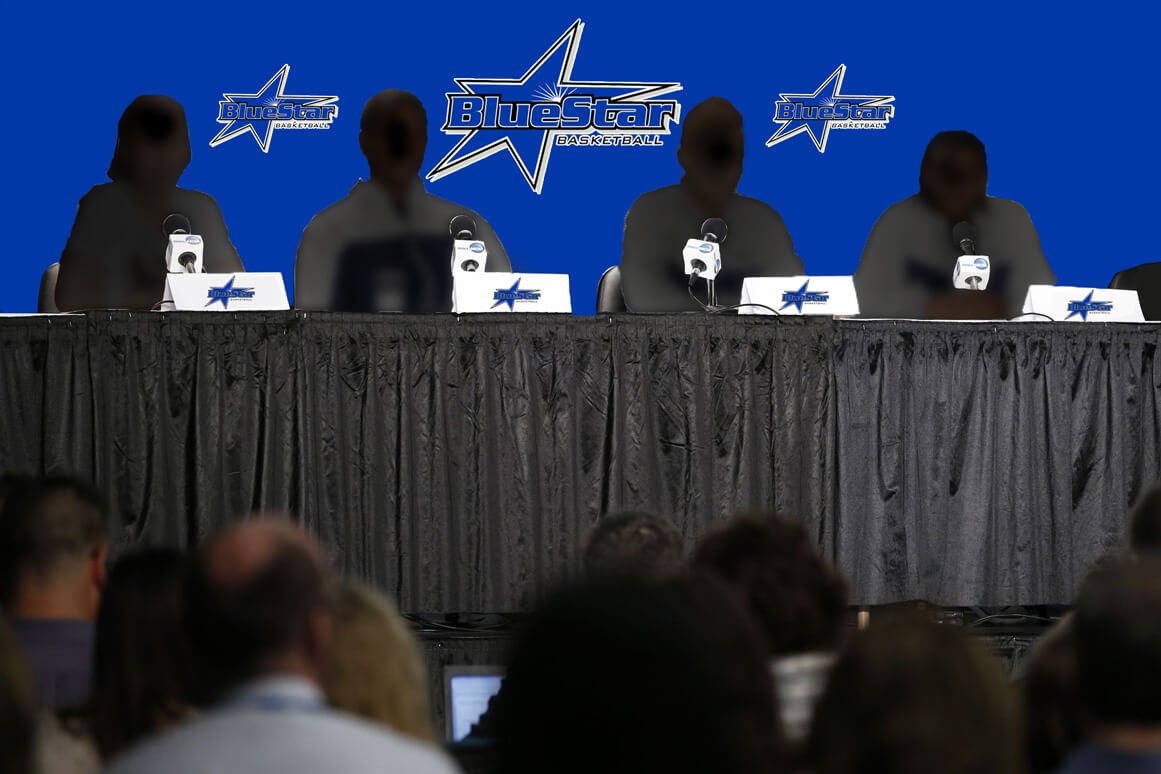
In a few days many of us will be gathering in Indianapolis for a Women’s Final Four with more compelling storylines than I can remember in years.
Oregon State, Syracuse and Washington, three first-time teams, fresh off upsets of top seeds, have made it through. The other team—shall we call it UConn?—boasts All-Americans in Breanna Stewart and Moriah Jefferson with a chance to do something no other players have ever accomplished in the history of Division I college basketball: Win four national championships.
The NCAA Division II and Division III title games also will be played at Bankers Life Fieldhouse. In addition to the Women’s Basketball Coaches Association convention, other events are tied to the upcoming 20th season of the WNBA and to advancing women in sports business.
This is all taking place in the heart of hoops heaven, Indiana, a spiritual home for many of us from gridiron country. There’s going to be so much to enjoy here it’s ridiculous.
And yet what’s the topic of conversation, coming out of a sterling round of Sweet 16 and Elite 8 games? A single tweet from a sports columnist who doesn’t follow the game, and who clearly doesn’t care that he’s made some people in women’s basketball, and the NCAA women’s tournament television rights holder, quite upset.
I’d rather not dwell too much on the saga of what The Boston Globe’s Dan Shaughnessy tweeted Saturday after UConn’s 60-point win over Mississippi State, that the Huskies’ domination, in his estimation, is bad for the game.
It’s a tiresome topic that isn’t worth rehashing. I’ve felt for years that too many people in the sport are too defensive when the likes of Shaughnessy sound off like this. Frankly, they’re not worth the bother.
Geno Auriemma’s reply—if you don’t like it, then don’t watch—was pitch-perfect, and should have been sufficient. As Connecticut sports columnist Mike DiMauro wrote, the Steve Spurrier of women’s basketball has pulled off another master stroke.
The Hartford Courant’s Jeff Jacobs agreed, and actually talked to Shaughnessy to get some larger context, beyond 140 characters. While I don’t agree with most of Shaughnessy’s argument, I appreciate his candor.
In his own column, Shaughnessy was more complimentary than you might imagine about UConn, women’s basketball and women’s sports. He just thinks this kind of domination isn’t interesting to watch. He is hardly alone in his thinking, by the way, especially among people like him, who are far outside the game.
If you still don’t like what he wrote (and he wrote something almost identical six years ago), then you should read what he thinks of soccer, a stance that puts him the strange bedfellow company of Ann Coulter.
Shaughnessy’s of a type that has long dominated my profession and is gradually fading away.
A late sports columnist I knew from my days on the Southern college football trail was hardly the first, nor the last, to start a rare column about women’s basketball this way:
“I love women. I love basketball. I hate women’s basketball.”
When he learned that not only did I write about women’s basketball, but I did so passionately, he never needled me about it, like others of his ilk.
Later on, when I heard him grousing about soccer, another sport I’ve written about with gusto, he forced a mocking smile and said: “I don’t know why I talk to you any more!”
We laughed, and that’s probably the best approach to take now.
I understand why promoters of women’s college basketball are thin-skinned about mainstream journalists disparaging a sport they otherwise ignore. To paraphrase Geno, you don’t have to read this stuff. Don’t let it deter from your enjoyment of the game.
Despite cries that women’s sports are “marginalized” in the media, here are some numbers that came to my attention while I was writing this: Sunday’s Elite 8 games on ESPN, played on an Easter afternoon, were among the highest-rated sports programs of all that day.
The Tennessee-Syracuse game drew 1.3 million viewers, while Washington-Stanford had 1.03 million viewers. Those figures trailed only the men’s NCAA Elite 8 games and were separated by a PGA Tour event.
A million viewers may not seem like a lot compared to 10 million tuning in North Carolina-Notre Dame or 7.5 million for Virginia-Syracuse, but those are fantastic numbers for women’s college basketball.
ESPN reported a 46 percent boost in its first- and second round women’s tournament ratings from 2015 (an average of 343,000 viewers), and that’s more good news.
I don’t think UConn is “ruining” the sport any more than when Tennessee won three NCAA titles in a row in the late 1990s, and fell just short of the Women’s Final Four in a bid for a four-peat.
But neither do I think it’s as simple as declaring a “double standard,” that women’s sports are victims of “systemic oppression” in the media, as former Cal and current Indiana Fever guard Layshia Clarendon has suggested. She writes that “the stories that would make women’s sports relevant exist. We just don’t tell them enough.”
That’s true to a degree, but I would argue that these stories are still waiting to find their proper audience. While TV exposure is great, and ESPN’s involvement has been crucial, grassroots promotion of the sport is imperative. For the third year in a row, the WBCA will be holding a marketing seminar for coaches that has already been a great success.
The NCAA still faces plenty of challenges getting fans to buy tickets and watch in person. While regional site attendance depended on whether a local draw was playing, Texas-El Paso sold more than 9,000 tickets for its WNIT quarterfinal game Monday, building off sellout crowds in the same tournament two years ago.
The best way to build a lasting, sustainable fan base is this way, school by school, not by demanding national media outlets lead the way. Coverage follows interest, not the other way around, but this has been a hard point to make in this sport.
What Shaughnessy wrote wasn’t sexist, just wrong-headed. Jacobs is spot-on when he claims that the problem with the women’s game is “programs two through 15, schools with great resources that pay coaches nearly a $1 million a year, booty from Power 5 football, attract all sorts of McDonald’s All-Americans and don’t consistently challenge UConn.”
It looks like that may be starting to change. The three other teams going to Indy are proof of that. If you worked up a quickie preseason Top 10 for 2016-17 right now, UConn might still be in it, but Notre Dame, South Carolina, Baylor, Texas and Ohio State will return more firepower than the Huskies.
Washington and Syracuse also will have most of their best players coming back. Likewise for Kentucky, Maryland, Louisville, UCLA, Tennessee, Mississippi State and Stanford.
That’s actually 15 teams, and there are others who figure to contend nationally next season.
The promise of some real, honest parity is just one of many things to celebrate about the immediate future of the women’s game, so long as you disregard what people like Dan Shaughnessy think.
Wendy Parker is a sportswriter and web editor who has covered women's basketball since the early 1990s. She is a correspondent for Basketball Times and formerly covered women's and college sports, soccer and the Olympics at The Atlanta Journal-Constitution. She is the author of "Beyond Title IX: The Cultural Laments of Women's Sports," available on Amazon, and the creator of Sports Biblio, a blog about sports books and history.




